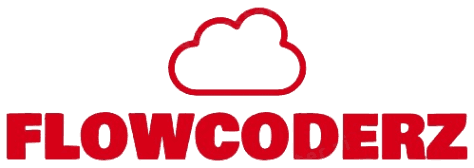In the world of cloud computing, multi-tenant architecture is a foundational concept that powers platforms like Salesforce. But what exactly does it mean, and why is it critical to Salesforce’s success?
If you’ve ever wondered how Salesforce:
✅ Delivers seamless updates
✅ Scales effortlessly
✅ Keeps costs competitive for millions of users worldwide
Multi-tenancy is the answer!
In this blog, we’ll break down:
- ✅ What multi-tenant architecture is
- ✅ How Salesforce uses it
- ✅ Its key benefits and challenges
- ✅ A comparison with single-tenancy
Let’s dive in! 🚀
What is Multi-Tenant Architecture?
Multi-tenant architecture is a design model where multiple customers (tenants) share the same infrastructure, applications, and databases while ensuring strict data isolation and security.
📌 Think of it like an apartment building:
🏢 All residents share the same foundation, utilities, and amenities
🏠 But each has their own private, secure living space
In Salesforce’s case:
🏢 Businesses of all sizes—from startups to Fortune 500 companies—run on the same cloud infrastructure but operate independently, without interfering with one another.
How Multi-Tenancy Works in Salesforce
Salesforce follows a single-instance, multi-tenant model, meaning:
✅ A single application instance runs on Salesforce servers.
✅ Multiple customers (organizations) share this infrastructure.
✅ Each organization’s data is logically separated using unique IDs.
✅ Resources like storage, CPU, and memory are shared across all tenants, ensuring efficiency.
This model ensures that Salesforce can provide updates, security, and maintenance without affecting individual customers' operations.
Key Components of Salesforce’s Multi-Tenant Architecture
1️⃣ Logical Data Separation
🔹 Salesforce stores all tenant data in a shared database but ensures strict logical separation.
🔹 Each organization’s records are accessible only to authorized users within that organization.
2️⃣ Shared Infrastructure
🔹 All customers use the same version of Salesforce, eliminating the need for separate deployments.
🔹 The platform dynamically allocates resources based on demand, ensuring optimal performance.
3️⃣ Metadata-Driven Architecture
🔹 Instead of storing customizations separately, Salesforce uses metadata to configure applications for each tenant.
🔹 This allows for seamless upgrades and scalability without breaking customer-specific configurations.
4️⃣ Security & Data Privacy
🔹 Salesforce ensures high security through encryption, role-based access control (RBAC), and compliance with global security standards like GDPR, HIPAA, and ISO 27001.
🔹 Each tenant’s data is securely isolated, preventing unauthorized access.
Benefits of Multi-Tenant Architecture in Salesforce
✅ Cost Efficiency – Shared infrastructure reduces operational costs, making Salesforce an affordable CRM solution.
✅ Automatic Upgrades – Salesforce releases three major updates per year, and all tenants benefit without manual upgrades.
✅ Scalability – Businesses can scale Salesforce usage without infrastructure concerns.
✅ High Performance – Multi-tenancy ensures efficient resource allocation and consistent performance.
✅ Security & Compliance – Salesforce maintains enterprise-grade security while meeting global compliance standards.
✅ Customizability – Organizations can customize Salesforce using metadata, APIs, and Lightning Components, despite sharing infrastructure.
Challenges of Multi-Tenancy in Salesforce
❌ Resource Contention – Since multiple tenants share infrastructure, high usage from one tenant may impact performance for others. 🚀 Salesforce mitigates this with Governor Limits.
❌ Limited Infrastructure-Level Customization – Unlike single-tenant systems, customers cannot modify the core infrastructure, but they can extend functionality using Apex, LWC, and AppExchange Apps.
How Salesforce Manages Multi-Tenancy Effectively
🔹 Governor Limits – Enforces fair resource usage by restricting CPU time, API calls, and SOQL queries per transaction.
🔹 Hyperforce – Salesforce’s latest cloud initiative that allows organizations to run Salesforce on public cloud infrastructure while maintaining multi-tenancy.
🔹 Instance Architecture – Salesforce operates on multiple instances across data centers worldwide to balance load and ensure high availability.
Single-Tenant vs. Multi-Tenant Architecture: A Comparison
| Feature | Single-Tenant | Multi-Tenant (Salesforce) |
| Infrastructure | Separate for each tenant | Shared across multiple tenants |
| Cost | High (each tenant maintains their own servers) | Lower due to shared resources |
| Upgrades | Manual updates required | Automatic updates for all tenants |
| Security | Custom security implementation | Enterprise-grade security by Salesforce |
| Scalability | Limited by server capacity | Easily scalable on demand |
Conclusion: Why Multi-Tenancy Matters in Salesforce
Salesforce’s multi-tenant architecture is the backbone of its efficiency, scalability, and cost-effectiveness. By leveraging shared resources while ensuring strict data isolation and security, Salesforce provides businesses with a powerful, flexible, and future-proof CRM solution.
🔹 Whether you're a startup, mid-sized business, or enterprise, Salesforce’s multi-tenancy ensures that you get access to enterprise-level CRM capabilities without the hassle of managing infrastructure.
Want to master Salesforce? Explore our Salesforce Tutorials for step-by-step guides and best practices!

